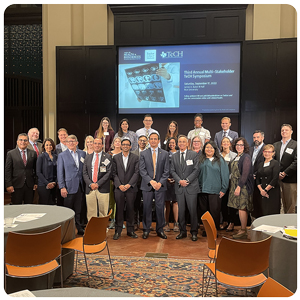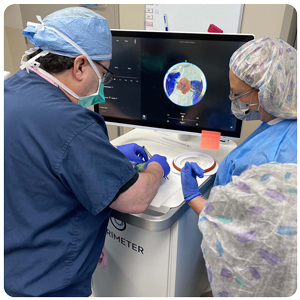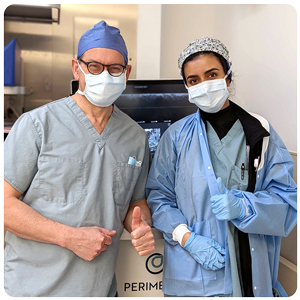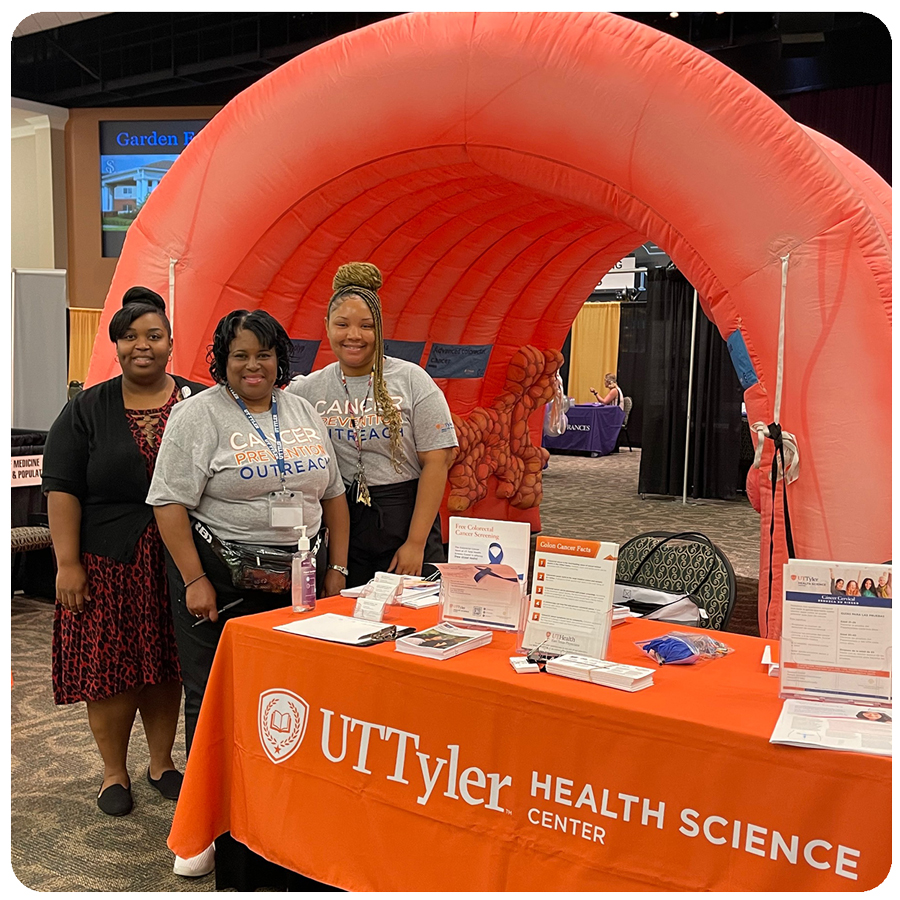Planning and Priorities
Accelerating innovation in cancer research and prevention requires comprehensive planning for current operations and well as longer-term goals. With a solid foundation of research innovation and prevention serves built through 13 years of steady investment, CPRIT has positioned the state for new life science opportunities.
The CPRIT Oversight Committee and staff use strategic and operational planning to identify near term and future opportunities to create and expedite innovation in cancer research and breakthroughs in cancer prevention. This sets the course for CPRIT’s activities year by year and for the future.
The four components of CPRIT’s long-term vision for the agency and each of its three programs serve as our guide.
Decrease cancer in Texas
through prevention and translation of discoveries into treatments and cures
Focus on disparities
in cancer incidence, mortality, and access to care
Accelerate advancements
in the scientific understanding of cancer
Enhance life sciences infrastructure
in the state
The Oversight Committee adopted its fiscal year 2022 priorities for CPRIT’s academic research, product development research, and prevention programs at its November 18, 2020, meeting. These annual program priorities guide CPRIT’s requests for applications and the evaluation of grant proposals. In addition to priorities specific to each grant program, CPRIT’s three programs share overarching priorities that span the cancer continuum from discovery to delivery. Although the priorities, listed below, serve as strategic areas of emphasis, they do not exclude funding innovative projects in areas outside of identified priorities.
Prevention and Early Detection Initiatives
The best way to reduce the physical, emotional, and financial burden of cancer is by preventing its occurrence and detecting it at its earliest stages. However, prevention and early detection efforts receive little funding relative to the amount devoted to curing advanced cancers.
Working together, each of CPRIT’s programs play a part in fulfilling this goal. Academic research discovers novel approaches to prevent and detect cancer early. Product development research provides new methods, diagnostics, imaging, and devices for early cancer detection. The prevention program puts these innovative approaches into practice.
Early Translational Research
Innovative cancer prevention efforts and treatments always start with an initial discovery. Grants from the federal government and foundations fund the basic research enabling these scientific discoveries. There is a lack of money to support the research and development activities necessary to translate initial discoveries into available therapies.
Opportunities for inter-program strategic investment by CPRIT include funding translational research that bridges the gap between basic research and product development, and between research on preventive measures and innovative technologies for early cancer detection. Funding these activities may stimulate new public-private partnerships in Texas.
Enhance Texas’ Research Capacity and Life Sciences Infrastructure
Texas has earned a reputation for cancer research superiority through a decade of unparalleled recruitment efforts bringing cancer scientists and clinicians, at all career levels, to academic institutions in Texas. Establishing Texas as a preeminent cancer research hub attracts industry interested in developing groundbreaking treatments.

Hepatocellular cancer (HCC) is the most common form of primary liver cancer, and the fastest rising cause of cancer-related deaths in the United States. Texas has the highest incidence rates of HCC in the nation. To address this challenge, the Oversight Committee prioritized fast-tracking progress in the prevention and research for projects in hepatocellular cancer.
CPRIT established the state’s first “Collaborative Action Program for Liver Cancer” (CAP) in 2018 to reverse the rising rates of liver cancer. The CAP built upon over $46 million in grants previously awarded to liver cancer research.
A cornerstone of this program is the Texas Collaborative Center for Hepatocellular Cancer (TeCH) started at Baylor College of Medicine following a $3 million CPRIT Academic Research grant (RP190641).
The overall goal of TeCH is to reduce HCC mortality in Texas by detecting HCC earlier and by reducing the number of people who develop this cancer. TeCH provides researchers the ability to collaborate with other researchers and to share discoveries with doctors, the community, and the general public.
A visible outcome of this collaboration is the TeCH annual conference which brings together stakeholders across the healthcare continuum to share the latest information on liver cancer. The Third Annual TeCH Symposium was held on September 17, 2022, and led by center director Hashem B. El-Serag, M.D., MPH.
Jane Montealegre, Ph.D., co-leader of the Community Outreach Committee, and Dr. El-Serag have expanded TeCH’s outreach by developing a conceptual model for HCC interventions, which was published in the Clinical Gastroenterology and Hepatology journal in May 2022. The framework is intended as a roadmap to inform clinical practice, research, and policy making for HCC prevention and will benefit researchers and practitioners throughout Texas.
By developing the CAP to address hepatocellular cancer, CPRIT has illustrated the capability of using targeted funding to concentrate collaboration on a critical, underfunded area of cancer research.

A priority of the CPRIT Product Development Research program is funding Texas companies developing novel projects that offer therapeutic or diagnostic benefits not currently available or that address large or challenging unmet medical needs.
A good example of this priority in practice is Perimeter Medical Imaging AI, Corp., a Dallas medical technology company working to transform cancer surgery with ultra-high-resolution, real-time, advanced imaging tools.
Perimeter’s lead technology is the S-Series OCT (Optical Coherence Tomography), a pioneering medical imaging system that provides cross-sectional, real-time margin visualization of excised tissue specimens in the operating room. The technology will provide surgeons with high-definition imagery of margins at the cellular level in real time, rather than waiting days for pathology reports.
CPRIT awarded Perimeter a $7.4 million CPRIT Product Development Research grant (DP190087) in 2019 to further Perimeter’s randomized, controlled, multi-site, pivotal study to evaluate the B-Series OCT combined with a ground-breaking AI technology called ImgAssist.
Developed by Perimeter under the ATLAS AI project, ImgAssist uses Machine Learning Algorithms developed to find areas suspicious for breast cancer in the OCT images of excised breast tissue samples. CPRIT’s investment has been fundamental in Perimeter’s ability to expedite the development of this game-changing AI technology.
In 2021, Perimeter received Breakthrough Device Designation from the US Food and Drug Administration for its OCT with ImgAssist AI technology. This federal designation provides expedited adoption of Perimeter's transformative combined medical imaging and artificial intelligence technology.

“The initiation of this pivotal trial marks another milestone in our ATLAS AI project and an important step in the clinical development of our breakthrough-device-designated Perimeter B-Series OCT with AI assisted software, which represents the next generation of our commercially available flagship Perimeter S-Series OCT,” said Jeremy Sobotta, Perimeter’s Chief Executive Officer. “Our hope is that clinical data generated from this study will provide supporting evidence that our technology can help breast cancer physicians improve outcomes for patients and potentially reduce the burden of additional costs within the healthcare system.”
In January 2022, Perimeter further expanded its ongoing study to include an additional clinical trial site at Baylor College of Medicine under the direction of principal investigator, Alastair Thompson, M.D. He enrolled the first clinical study subject into the trial in February 2022.
“Perimeter’s novel imaging technology with AI fits into the routine surgical process with no additional imposition to the patient as it examines a tissue sample that is already being extracted,” said Dr. Thompson.
There are currently eight sites involved in this pivotal study at both community and academic centers, and four are in Texas.
By funding the development of breakthrough technologies through companies like Perimeter, CPRIT is fulfilling its promise to keep Texas on the cutting edge of cancer therapies and treatment.

A central concept in the Prevention priorities adopted by the CPRIT Oversight Committee is to apply funding to benefit populations and geographic areas of the state disproportionately affected by cancer incidence, mortality, or cancer risk prevalence. The ability to reach these underserved populations is an important factor in CPRIT-funded prevention programs.
In 2010, the incidence rate for colorectal cancer in mostly rural East Texas was the highest in the state. Recognizing the need to address this need, The University of Texas at Tyler Health Science Center applied for and received a $1.25 million CPRIT Prevention grant for the project, “Improving Access to Colorectal Cancer Screening in East Texas” (PP140018). With this initial CPRIT grant, the UT Tyler Health Science Center provided screening services to the un- and under-insured in seven counties in East Texas and established multiple partnerships with existing programs in the community. Researchers at UT Tyler Health Science Center also provided colorectal cancer screening decision tools to their clinical colleagues in primary care and engaged them in assisting with recruitment to this program.
In support of the program’s proven success, CPRIT awarded UT Tyler Health Science Center two additional grants in 2016 and 2019 (PP160023, PP190070), which allowed the project to expand into thirty-two counties in East Texas.
In 2022, UT Tyler Health Science Center and Paul McGaha, D.O., received another CPRIT Prevention grant (PP220034) that focuses on the utilization of fecal immunochemical testing (FIT) and colonoscopies in thirty-eight primarily rural and medically underserved East Texas counties. With the latest award, they renamed the program “Screening to Optimize Prevention of CRC in East Texas” (STOP CRC ET).
With a total of $8 million from four CPRIT grants, The UT Tyler Health Science Center has provided CRC screening services to more than 10,000 individuals through clinical services, educated nearly 22,000 individuals, and trained over 2,200 health professionals in the last 8 years.
These sustained grants highlight CPRIT’s ability to provide long-term prevention funding to address a particular cancer risk in an underserved population.
CPRIT’s $3.12 billion investment in 1,794 of the best ideas in cancer research, product development research, and prevention is building a vibrant life sciences ecosystem across the state. This groundbreaking work enhances Texas’ competitive edge in the global fight against cancer and is saving lives. From a foundation built through 13 years of steady investment, Texas can now expand into new life science opportunities. Setting the course for the next decade of work, CPRIT and its stakeholders have identified several preliminary initiatives for further development.